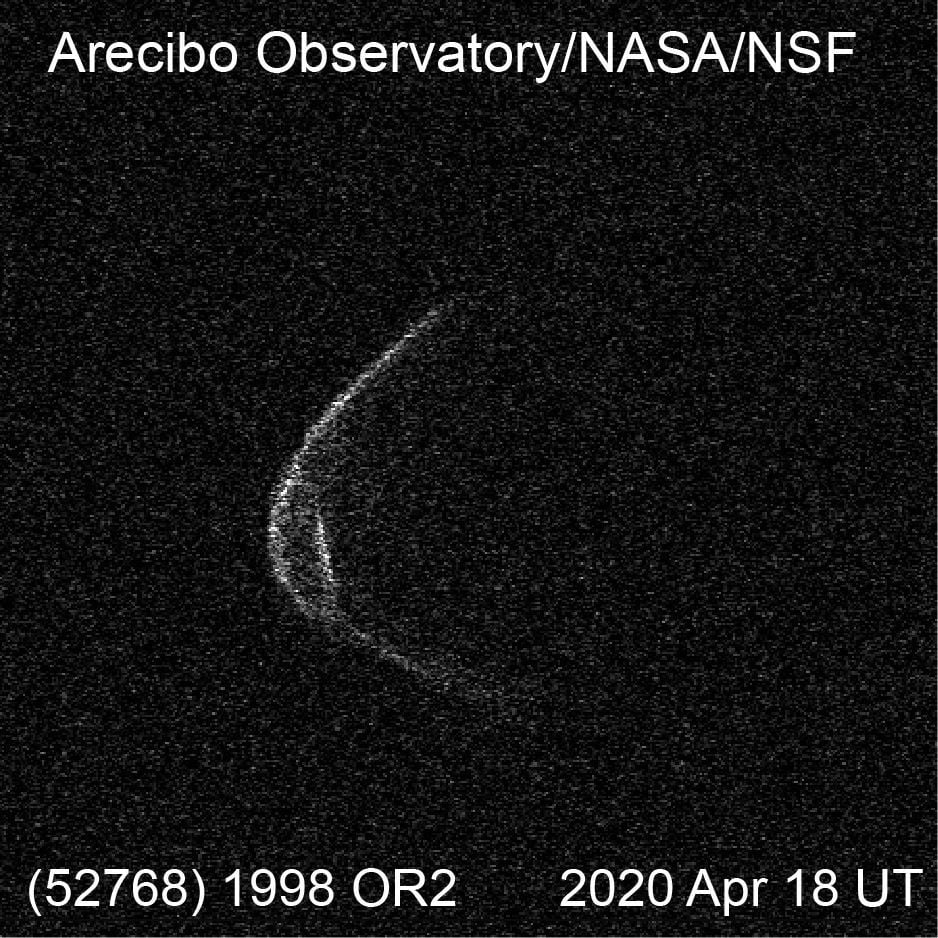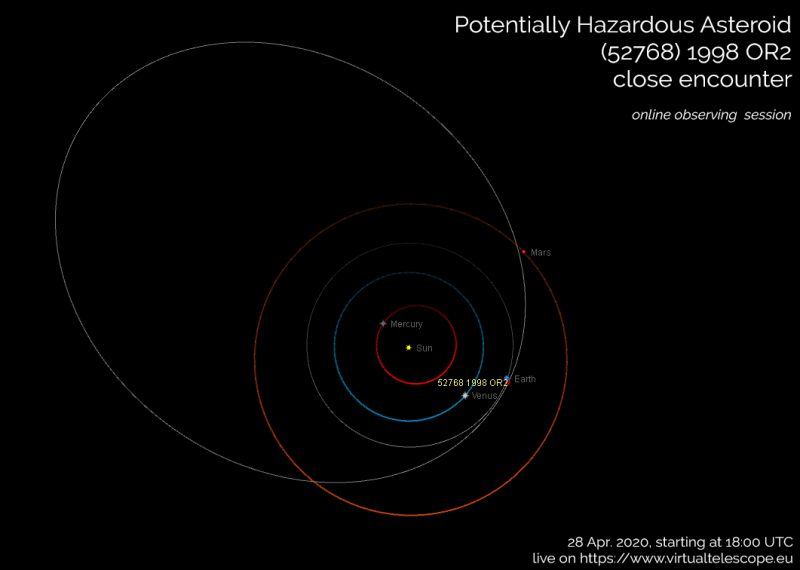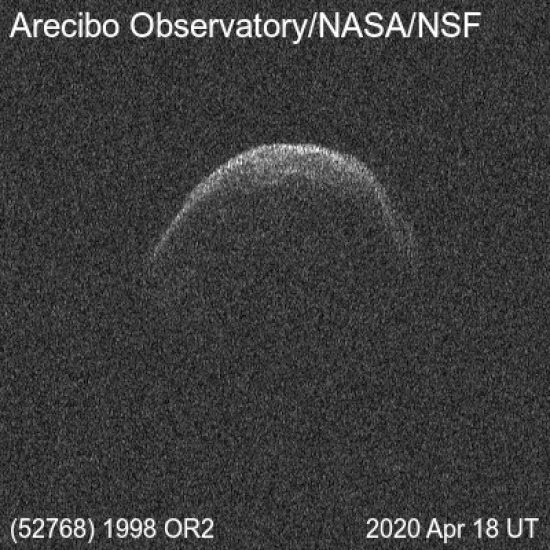
On April 29, 2020, Earth will get an intimidating visitor — a massive asteroid called 1998 OR2. Fortunately for us, the space rock, which experts believe will be the largest one to fly by our planet this year, will be following the strict COVID-19 pandemic regulations. 1998 OR2 will not only be zooming past Earth at a safe "social" space of about 3.9 million miles (6.3 million km), or about 16 times the distance between the Earth and the Moon, but it will also be wearing a "face mask."
"The small-scale topographic features such as hills and ridges on one end of asteroid 1998 OR2 are fascinating scientifically," says Anne Virkki, head of the Planetary Radar at the Arecibo Observatory in Puerto Rico. "But since we are all thinking about COVID-19, these features make it look like 1998 OR2 remembered to wear a mask."

Measuring approximately 1.2 miles (2 kilometers) wide, the largely spherical 1998 OR2 rotates once every 4.1 hours and travels through space at a rapid pace of 19,461 miles per hour (31,320 km/h). First observed on July 27, 1998, by astronomers at the Haleakala Observatory in Hawaii, it belongs to a special category of near-Earth asteroids called potentially hazardous objects (PHOs). The classification includes large space rocks — over 500 feet (152 meters) across — that come to within 5 million miles of Earth's orbit and pose a danger to our planet.
1998 OR2 will not impact Earth during its 2020 visit. However, the Arecibo Observatory team has been closely tracking and collecting data on the space object since April 13, 2020. "The radar measurements allow us to know more precisely where the asteroid will be in the future, including its future close approaches to Earth," says Flaviane Venditti, a research scientist at the observatory. "In 2079, asteroid 1998 OR2 will pass Earth about 3.5 times closer than it will this year, so it is important to know its orbit precisely."

Though it is not bright enough to view with the unaided eye, amateur astronauts will be able to see 1998 OR2, which will appear as a slow-moving "star," using 6-to-8-inch telescopes. US residents can also tune into Slooh.com's Facebook, Twitter, or YouTube channels to get a closer glimpse. Since the asteroid will be best viewed at night, the one-hour-long free event will commence at 7 p.m. EDT on April 28, 2020, or about 11 hours before 1998 OR2 makes its closest approach to Earth at 5:56 a.m. EDT on April 29, 2020
Happy viewing! Be sure to let us know what you thought of our COVID-19 compliant visitor by writing your comments below.
Resources: graduate.ucf.edu, earthsky.org
